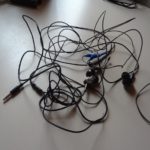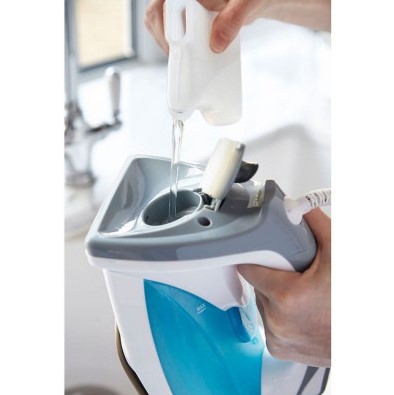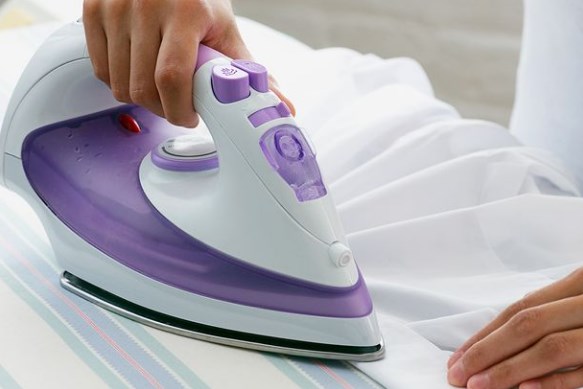How to glue rhinestones to fabric with an iron
Rhinestones are a means for decorating clothing, interior items, canvas, plastic and other surfaces. In order to make decorative trim with rhinestones, you don’t need any special skills, just take an iron and put in a little effort.
The glue on the shiny “bead” is heated and fixed to the surface of the fabric, plastic when cooling. In this article we will tell you what types of rhinestones there are, methods of attaching them to surfaces, and how to glue them correctly.
The content of the article
Instructions for gluing rhinestones to fabric with an iron
- We mark the drawing with chalk or a sewing marker; you can transfer the picture using tracing paper. We draw the contours.
- We place foil or wax paper under the material where we will be gluing. So, we won't smear the table with melted glue.
- We set the iron to the gentle setting, which we usually set for ironing woolen or silk items. We lay out the rhinestones along the intended contour, according to the image.
- Place another layer of material on top and iron it. You don’t need to hold the iron for a long time or press them hard; 2-3 seconds are enough for the glue to melt.
- Remove the protective layer of fabric.
Methods for gluing rhinestones to fabric
Glue
Take Schmuckstein Kleber glue. The consistency of the water-based adhesive is similar to a solution of milk and water.After gluing the rhinestones, it will not leave any greasy or sticky marks. We will need a wax candle; we will sharpen its ends with our fingers. You can use a wooden (plastic) stick and drop melted wax on it:
- Apply droplets of adhesive along the contour of the laid out pattern. We pre-coordinate the droplet size. It should be such that it will stick the decoration and slightly protrude beyond its edges. If you make the drop small, the rhinestones will quickly fall off;
- We take the crystals with a candle and place them in the resulting droplets;
- We place a piece of material or a special mat (purchased in stores for needlewomen) under the working base;
- You can simply take the rhinestone, dip it in glue and press it to the surface. But it’s more difficult to glue this way: the rhinestone smears, and the tweezers stain the fabric and stick on its own.
Applicator
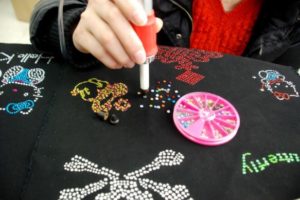 The tool configuration includes several attachments for different rhinestone diameters:
The tool configuration includes several attachments for different rhinestone diameters:
- We select the nozzle and plug in the device. Lay out the outline according to the drawing;
- Pressing it to the fabric, glue the decoration;
- There is a vacuum applicator with a built-in pump that draws in the jewelry, preventing it from falling out.
You should not use a regular soldering iron instead of the device; it can easily burn through the material or leave scorch marks on it.
Toothpick or match
A similar tool can be made from a regular toothpick and a piece of wax on the tip.
- Squeeze the glue out of the tube, dip the rhinestone into the adhesive mixture;
- Glue onto the fabric while pressing;
- Remove excess glue with a piece of paper or cardboard.
Scotch
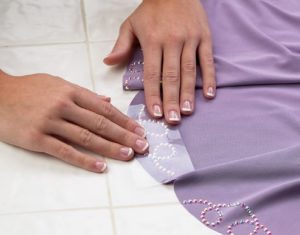 In sewing shops you can purchase a special heat-resistant tape film onto which the entire design is transferred; all that remains is to iron the resulting image with an iron.
In sewing shops you can purchase a special heat-resistant tape film onto which the entire design is transferred; all that remains is to iron the resulting image with an iron.
- We lay down the adhesive tape and apply thermal rhinestones on it;
- Place the prepared film on the work surface;
- Iron and remove the tape;
- Glue is applied to rhinestones that cannot be glued with an iron. The gluing procedure is the same; after decoration, the film is removed.
The disadvantage of this method is that the application of each detail is not controlled; the rhinestone can easily slip off. This method is easy to treat large areas.
Sewing
If the rhinestone has two holes, through which the decoration is sewn to the material. We thread the needle, leave a knot on the wrong side, sew on the decoration without cutting the thread, and continue sewing. On average, one thread is enough to fasten 6–12 pieces.
If necessary, you can easily remove the rhinestones or undo the seam. This way, you won’t be able to ruin the material. But over time, the sharp edges of the decoration will fray the thread, and the rhinestones will have to be altered.
What types of rhinestones exist
Rhinestones are divided into several groups:
By material: glass, crystal, acrylic, ceramics, plastic.
By effect:
- Colored. As a rule, one color with slight tints in the light; transparent; the bottom is embossed or flat; may have a mirror bottom;
- With spraying effect. Jewelry with rainbow shimmer; the bottom is flat or embossed. They can be sewn, glued or iron-on;
- With a satin effect. The shine is muted, usually used to decorate a dark surface. The bottom is embossed or flat.
By fastening (with glue, hot fixation, with sewing, in metal baskets, mortar fastening):
- Cold fixation. Attach with glue. Usually have a flat bottom and mirror coating;
- Thermal rhinestones (hot fix). Hot glue is applied to the flat bottom; when heated, the glue melts and secures the decoration to the fabric;
- Sew-on.Such crystals are larger and can be sewn to fabric through holes. Can be reused;
- Crystals in trays. They are attached with a needle and thread, often whole ribbons or strips are made from them, and used for making jewelry;
- Crystals with solution mounting. They can be small or large; they are often used in the manufacture of jewelry, for inlaying various surfaces and interior items.
conclusions
Rhinestones are used to decorate clothes, interior items, dishes, and lay out paintings. The method of attaching crystals to decorate the surface must be selected taking into account the material (plastic, ceramics, type of fabric), the area of the surface to be processed, technical capabilities, and the skill of the needlewoman.
For processing clothes, it is recommended to choose a hot-melt adhesive or an adhesive base decoration method. To process more complex surfaces, such as ceramics, solution-mounted crystals can be used. And crystals in baskets are perfect for making beautiful ribbons, chains, necklaces or bracelets.



